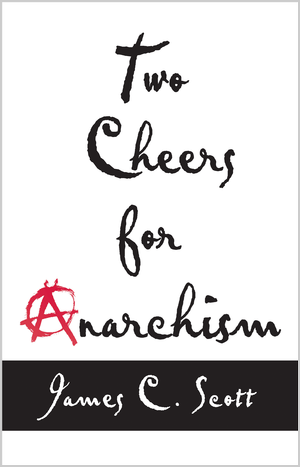 Political scientist James C. Scott, author of a series of ground breaking books that explore some of political and anthropological aspects of resilience has a new book out Two Cheers for Anarchism: Six Easy Pieces on Autonomy, Dignity, and Meaningful Work and Play.
Political scientist James C. Scott, author of a series of ground breaking books that explore some of political and anthropological aspects of resilience has a new book out Two Cheers for Anarchism: Six Easy Pieces on Autonomy, Dignity, and Meaningful Work and Play.
On this blog I’ve frequently mentioned his book “Seeing Like a State“, and also enjoyed his “The Art of Not Being Governed: An Anarchist History of Upland Southeast Asia” with its interesting perspectives on state resistance. I found it particular interesting due to the connections I could see between his work on fugitive societies from the state, resonated with my own experience working with and researching Maroons in the Americas.
He introduces his new book with a preface which argues for the value of an “anarchist squint,” which I believe has many resonances with resilience research. In the preface (pdf) he writes:
James C. Scott in his preface to his new book “Two Cheers for Anarchism:”
Lacking a comprehensive anarchist worldview and philosophy, and in any case wary of nomothetic ways of seeing, I am making a case for a sort of anarchist squint. What I aim to show is that if you put on anarchist glasses and look at the history of popular movements, revolutions, ordinary politics, and the state from that angle, certain insights will appear that are obscured from almost any other angle. It will also become apparent that anarchist principles are active in the aspirations and political action of people who have never heard of anarchism or anarchist philosophy. One thing that heaves into view, I believe, is what Pierre-Joseph Proudhon had in mind when he first used the term “anarchism,” namely, mutuality, or cooperation without hierarchy or state rule. Another is the anarchist tolerance for confusion and improvisation that accompanies social learning, and confidence in spontaneous cooperation and reciprocity. Here Rosa Luxemburg’s preference, in the long run, for the honest mistakes of the working class over the wisdom of the executive decisions of a handful of vanguard party elites is indicative of this stance. My claim, then, is fairly modest. These glasses, I think, offer a sharper image and better depth of field than most of the alternatives.
Scott goes on to define what he means by an anarchist squint:
My anarchist squint involves a defense of politics, conflict, and debate, and the perpetual uncertainty and learning they entail. This means that I reject the major stream of utopian scientism that dominated much of anarchist thought around the turn of the twentieth century. In light of the huge strides in industry, chemistry, medicine, engineering, and transportation, it was no wonder that high modernist optimism on the right and the left led to the belief that the problem of scarcity had, in principle, been solved. Scientific progress, many believed, had uncovered the laws of nature, and with them the means to solve the problems of subsistence, social organization, and institutional design on a scientific basis. As men became more rational and knowledgeable, science would tell us how we should live, and politics would no longer be necessary. …. For many anarchists the same vision of progress pointed the way toward an economy in which the state was beside the point. Not only have we subsequently learned both that material plenty, far from banishing politics, creates new spheres of political struggle but also that statist socialism was less “the administration of ” things than the trade union of the ruling class protecting its privileges.
Unlike many anarchist thinkers, I do not believe that the state is everywhere and always the enemy of freedom.
…
Nor do I believe that the state is the only institution that endangers freedom. To assert so would be to ignore a long and deep history of pre-state slavery, property in women, warfare, and bondage. It is one thing to disagree utterly with Hobbes about the nature of society before the existence of the state (nasty, brutish, and short) and another to believe that “the state of nature” was an unbroken landscape of communal property, cooperation, and peace.…
The last strand of anarchist thought I definitely wish to distance myself from is the sort of libertarianism that tolerates (or even encourages) great differences in wealth, property, and status. Freedom and (small “d”) democracy are, in conditions of rampant inequality, a cruel sham as Bakunin understood. There is no authentic freedom where huge differences make voluntary agreements or exchanges nothing more than legalized plunder.
…
What is clear to anyone except a market fundamentalist (of the sort who would ethically condone a citizen’s selling himself—voluntarily, of course—as a chattel slave) is that democracy is a cruel hoax without relative equality. This, of course, is the great dilemma for an anarchist. If relative equality is a necessary condition of mutuality and freedom, how can it be guaranteed except through the state? Facing this conundrum, I believe that both theoretically and practically, the abolition of the state is not an option. We are stuck, alas, with Leviathan, though not at all for the reasons Hobbes had supposed, and the challenge is to tame it. That challenge may well be beyond our reach.
For more on Scott, here is a profile in the New York Times and his entry in Wikipedia. Here are some reviews of “Two cheers” from a diverse set of places: Wall Street Journal, the Coffin Factory, the LA Review of Books, and Fortune Magazine.
